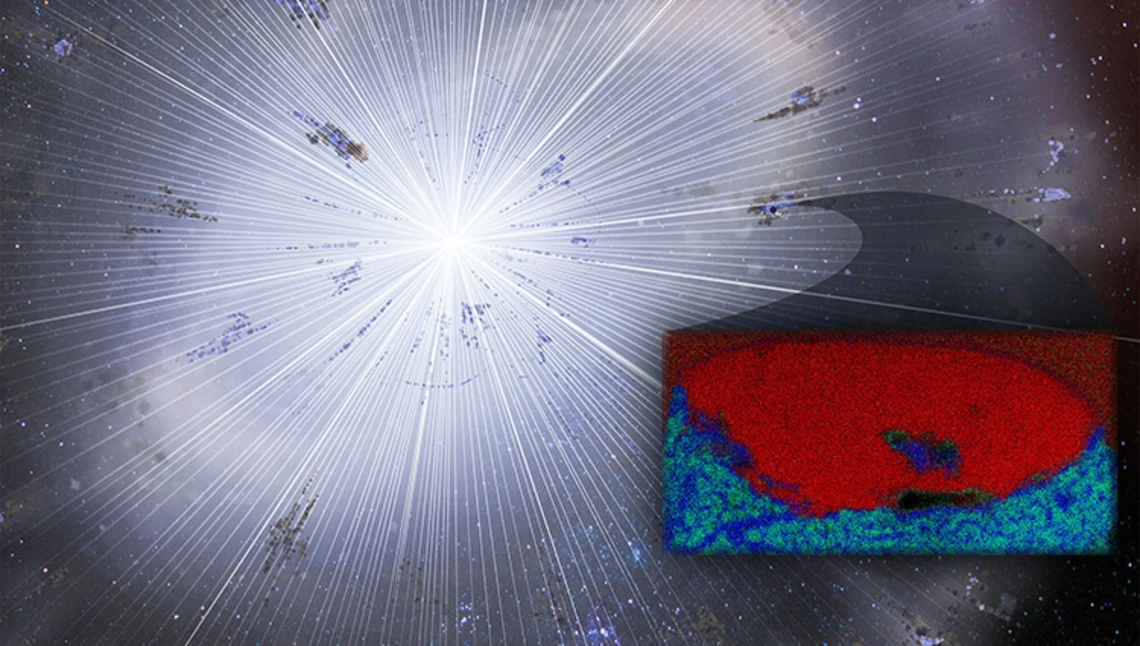Speck of Stardust Offers Insight Into Solar System Formation

How did the solar system form? Tom Zega, an assistant professor in the UA's Lunar and Planetary Laboratory with a joint appointment in MSE, contributed to new research in Nature Astronomy that challenges current theories about how dying stars seed the universe.
The team of researchers discovered a tiny grain of dust, dubbed LAP-149, tucked inside a meteorite collected in Antarctica. Using the UA's sophisticated ion and electron microscopy facilities, they analyzed the microbe-sized dust grain down to the atomic level and found extraordinarily carbon-rich graphite, as well as oxygen-rich material. LAP-149 is the first known grain consisting of graphite that contains an oxygen-rich silicate inclusion.
Unfortunately, LAP-149 does not contain enough atoms to determine its exact age, so researchers hope to find similar, larger specimens in the future.
"If we could date these objects someday, we could get a better idea of what our galaxy looked like in our region and what triggered the formation of the solar system," said Zega.
